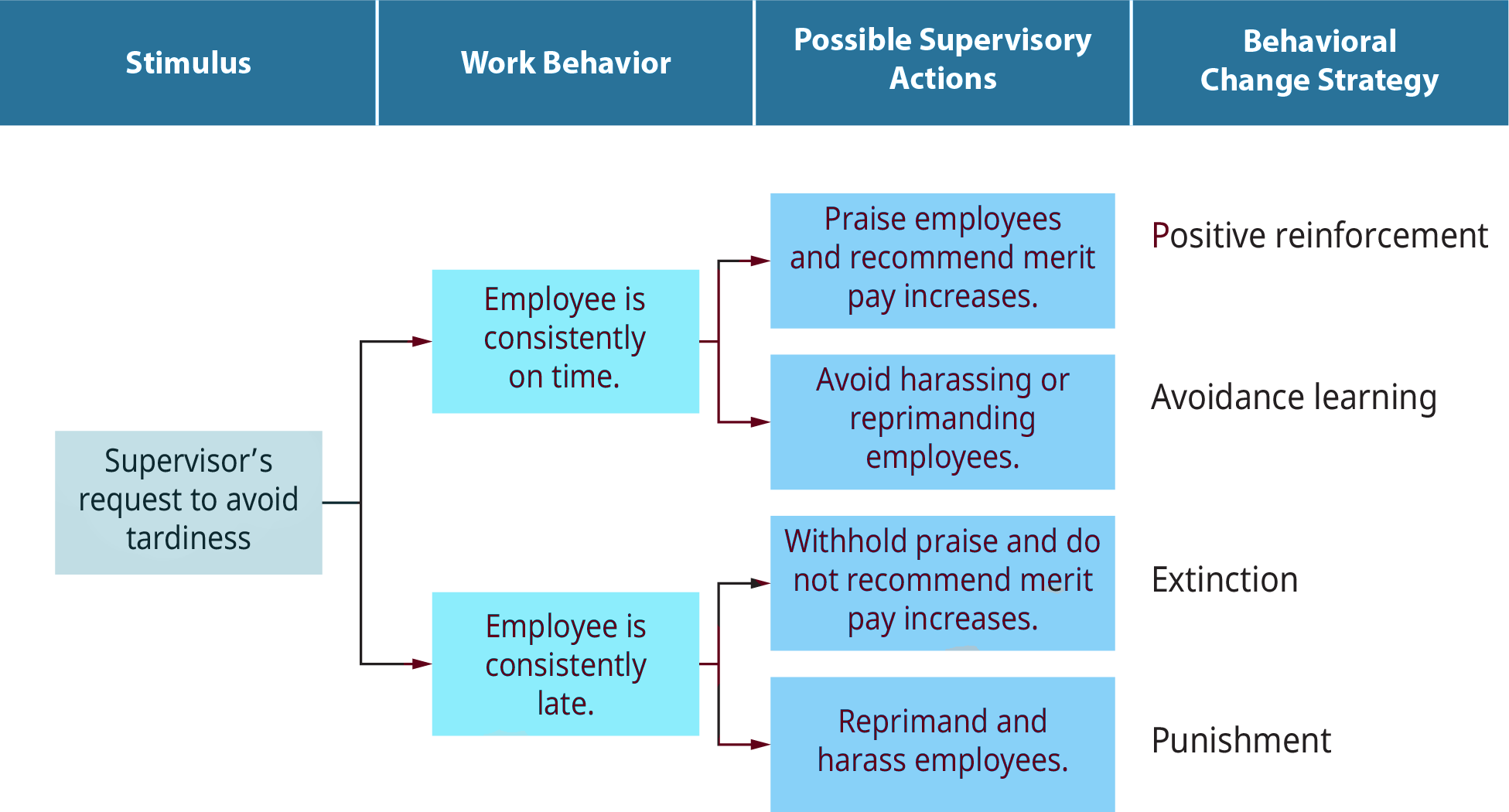Introduction
Motivation plays a crucial role in shaping human behavior, especially in workplaces, education, and daily life. One of the most influential theories in behavioral psychology is Skinner’s Reinforcement Theory. Rooted in Operant Conditioning, this theory suggests that behavior is shaped by its consequences—whether rewards or punishments. Organizations, educators, and individuals can use reinforcement techniques to improve productivity, learning, and goal achievement.
Read More- Goal Setting Theory of Motivation
Understanding Reinforcement Theory
Some of the most important components of reinforcement theory includes-

Operent Conditioning Principles
1. Positive Reinforcement
When a behavior is followed by a desirable stimulus, increasing the likelihood of that behavior occurring again.
- Example- A sales team receives a commission bonus for exceeding their targets. As a result, employees are motivated to enhance their sales efforts.
- A study by Stajkovic & Luthans (2001) analyzed meta-data from 72 workplace reinforcement studies and found that financial, social, and performance-based reinforcements increased employee performance by 17% on average.
- Walmart successfully uses performance-based incentives, such as “Employee of the Month” programs and cash bonuses, to motivate workers. Employees who receive recognition and rewards demonstrate improved job performance and satisfaction.
2. Negative Reinforcement
The removal of an unpleasant stimulus after a behavior, encouraging the behavior to be repeated.
- Example- A manager who initially micromanages employees reduces supervision when they show responsibility, encouraging continued diligence.
- Research by Komaki, Barwick, & Scott (1978) found that when managers reduced negative oversight after employees met targets, performance and job satisfaction improved.
- Toyota’s lean manufacturing approach involves removing redundant checks for skilled employees who demonstrate consistent accuracy, reinforcing productivity.
3. Punishment
Introducing an unfavorable consequence to decrease undesirable behavior.
- Example- Employees who frequently arrive late may receive verbal warnings or salary deductions, discouraging lateness.
- Arvey & Ivancevich (1980) examined disciplinary actions in companies and found that consistent and justified punishment (such as demotions for poor performance) led to a 30% improvement in compliance.
- Amazon applies strict performance monitoring policies where failure to meet quotas may result in disciplinary action, ensuring high efficiency (although some argue it creates workplace stress).
4. Extinction
The gradual disappearance of a behavior when it is no longer reinforced.
- Example- If a manager stops recognizing employees’ extra efforts, they may lose motivation to go beyond their basic duties.
- Luthans & Stajkovic (1999) observed that when companies removed recognition programs, discretionary effort from employees dropped by 24%.
- Google’s discontinued perks (such as unlimited free meals in some locations) led to dissatisfaction among employees, reducing their willingness to engage in extra tasks.
Application of Reinforcement Theory in Motivation
Some of the applications of reinforcement includes the following-
1. Workplace Motivation
Companies apply reinforcement techniques to shape employee behavior:
- Positive Reinforcement – Bonuses, promotions, and awards motivate employees to exceed expectations.
- Negative Reinforcement – Removing strict rules for high performers fosters autonomy.
- Punishment – Warnings and penalties discourage counterproductive behavior.
- Extinction – Lack of recognition can unintentionally demotivate employees.

Operent Conditining in Workplace
Case Study: General Electric (GE)
GE implemented performance-based incentives where employees received stock options for meeting targets. This increased productivity by 25% over five years (Luthans, 2000).
2. Education and Learning
Teachers use reinforcement principles to enhance student learning.
- Positive Reinforcement – Praise, grades, and rewards encourage academic performance.
- Negative Reinforcement – Exempting top students from assignments fosters excellence.
- Punishment – Low grades for incomplete work discourage negligence.
- Extinction – Ignoring disruptive behavior can reduce attention-seeking actions.
Case Study: Skinner’s Teaching Machines
Skinner (1958) developed teaching machines that rewarded students for correct answers, proving that immediate reinforcement enhances learning retention.

Skinner’s Teaching Machine
3. Personal Development
Individuals use reinforcement to build habits.
- Positive Reinforcement – Rewarding oneself with a treat after completing tasks.
- Negative Reinforcement – Removing distractions to improve focus.
- Punishment – Setting penalties for missing goals.
- Extinction – Ignoring social media notifications to curb phone addiction.
Case Study: Fitness and Habit Formation
Research by Kaushal & Rhodes (2015) found that individuals using reinforcement-based techniques (like rewarding themselves after exercise) increased adherence to fitness routines by 40%.
Conclusion
Skinner’s Reinforcement Theory provides a practical, evidence-based approach to motivation. Whether in the workplace, education, or personal life, using reinforcement strategically can improve performance, learning, and goal achievement.
Understanding how positive reinforcement encourages, negative reinforcement strengthens, punishment deters, and extinction weakens behaviors allows individuals and organizations to optimize motivation and productivity effectively.
References
Arvey, R. D., & Ivancevich, J. M. (1980). Punishment in Organizations: A Review, Propositions, and Research Suggestions. Academy of Management Review, 5(1), 123-132.
Kaushal, N., & Rhodes, R. E. (2015). Exercise Habit Formation in New Gym Members: A Longitudinal Study. Health Psychology, 34(11), 1240–1249.
Komaki, J., Barwick, K. D., & Scott, L. R. (1978). A Behavioral Approach to Occupational Safety: Pinpointing and Reinforcing Safe Performance in a Food Manufacturing Plant. Journal of Applied Psychology, 63(4), 434.
Luthans, F. (2000). Behavioral Management and Development in Organizations. Journal of Organizational Behavior, 21(1), 89-103.
Luthans, F., & Stajkovic, A. D. (1999). Reinforcement Theory and Organizational Behavior Modification: An Empirical Review and Evaluation. Psychological Bulletin, 125(2), 216-235.
Skinner, B. F. (1953). Science and Human Behavior. Macmillan.
Skinner, B. F. (1958). Teaching Machines. Science, 128(3330), 969-977.
Stajkovic, A. D., & Luthans, F. (2001). Differential Effects of Incentive Motivators on Work Performance. Academy of Management Journal, 44(3), 580-590.
Subscribe to Careershodh
Get the latest updates and insights.
Join 16,379 other subscribers!
Niwlikar, B. A. (2025, April 9). Skinner’s Reinforcement Theory for Motivation and 4 Important Concepts. Careershodh. https://www.careershodh.com/skinners-reinforcement-theory-for-motivation/
